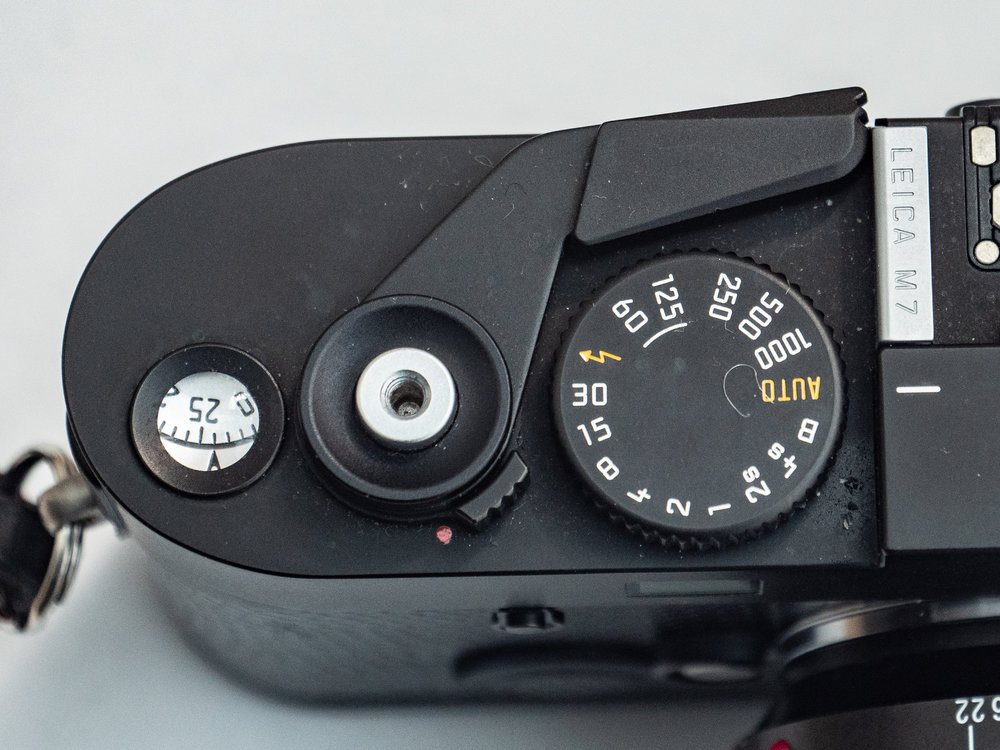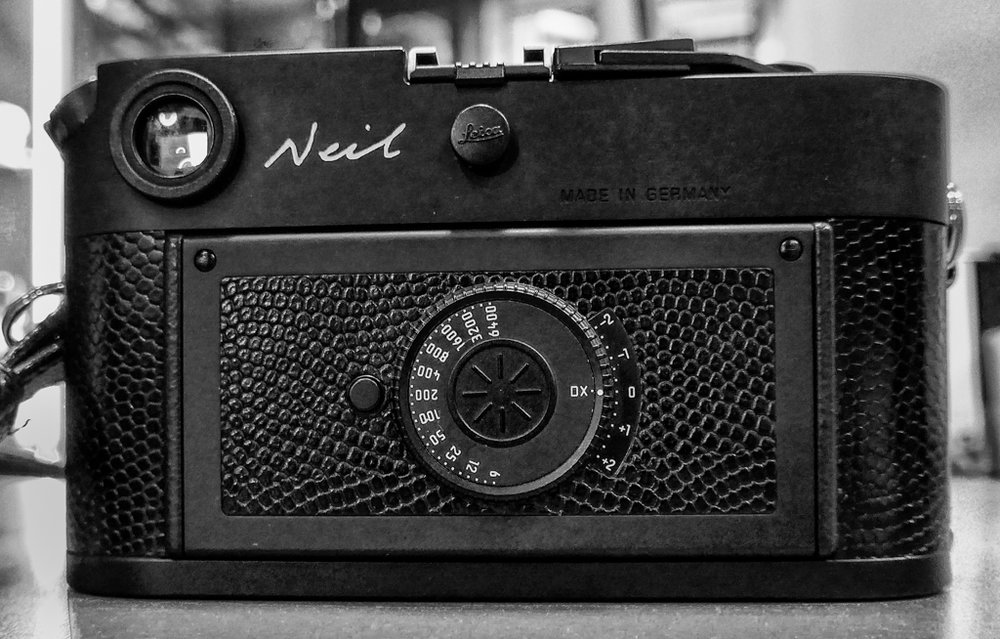Sad news today. The M7 has been discontinued. Leica Rumors and Reddot Forum report that the Leica M7 has been discontinued. — and there has been no official confirmation from the factory, but then there seldom is in such instances — it will be missed. This will leave just two film camera’s in the Wetzlar line-up, the metered MP and the unmetered M-A.

The M7 represented the pinnacle of Leica’s film camera development — identical in capabilities to the digitals, including the M10 — and offering automatic aperture-priority shooting. Of all the film cameras I own, the M7 is the easiest to use.
For some reason, though, the M7 has never been a big success. It has a reputation (not entirely true, I feel) for eating batteries. But then batteries are small, cheap and easy to carry. The advantage of A-priority for a dedicated user far outweigh any perceived battery-life problems. And, even with flat batteries, the M7 has two mechanical speeds that can be used in an emergency.
I suppose the M7 was not selling in sufficient numbers to justify continued production. One of the problems for manufacturers of new film cameras is that older cameras can do just as good a job. You get a new sensor every time to load a film, so the differences come down to the mechanics and metering. It’s easy, and much cheaper, to choose an M4 or an M6 and get the same shooting experience, not to mention the same results.
The good aspect is that the M7 is plentiful on the used market and is something of a bargain at around £1,200. It will be with us for years to come and, perversely, the discontinuation could spark renewed interest in current models.
In the past couple of years, Leica film camera interest has focused on the M6 Classic, which has steadily risen in price and is in demand because of many press and blog articles extolling its virtues as the the most sensible buying choice.
With its manual aperture and speed selection, aided by the light meter, it is seen as simpler and more foolproof than the M7. The MP, which has the same metering system and similar ergonomics to the M6 Classic, is always in demand and generally fetches around £2,000 on the used market. The new M-A, which has no light meter is something of an unknown quantity and it is difficult to put a price on second-hand versions. My personal inclination, if attracted to the M-A, would be to buy a used M4 instead. On the other hand, as a camera to buy and keep for 50 years, The M-A is likely to be a good investment.

If you have a lust for a competent film camera which can act in every respect as a second body to accompany an M240 or M10, then I would still recommend the M7. For starters, it is cheaper than the M6 and MP and gives those extra automatic features that make life a bit easier. Who knows, the M7 could now become another classic.
__________
- Subscribe to Macfilos for free updates on articles as they are published
- Want to comment on this article but having problems?


Wow, amazing how time flies. I had been sent a pre-production M7 to evaluate and photograph for the LHSA Viewfinder. I made it the cover shot for Viewfinder, shot on an all black background with my then new MATE lens. Leica USA liked it so much, they paid me to use the image for their training binders!
Part of Leica’s problem is they make such good cameras that last so long, there is always a good pool of barely used cameras in the used market. Demand for new cameras of the same cameras with the same features as past models will lag. If your old camera is just as good as a new one, why buy a new one? Despite what we may want to believe, Leica is a company like any other, in business to make a profit. They are not a charity. If it is no longer economically viable to keep a model in production, good business practices dictate it must be discontinued.
How many professional grade film cameras are still in production by other manufacturers? Nikon? Canon? Anybody? Leica is to be commended for keeping their other film M cameras in production. Hopefully for many more years!
The M7 will rise in value steadily now that it is discontinued. I think the Neil engraving adds a charm to the camera – have you given thought to changing your name to match the camera?
Now there’s a good idea. Never thought of that. I shall appoint Neil as a contributor to write especially about the M7. Thanks.
There it is…
Oi been lookin’ for that for ages.
I have an M7, but I rarely use it. The camera has been in a cabinet for a good number of years. I have most of the film Ms and my favourites to use are the M3 ( because of the wonderful viewfinder) and the M6 (with a meter, but all manual if the battery goes). The M7 has had a good innings with 16 years of production and it seems that Leica are just doing a bit of rationalisation. As for value, despite the fact that I am a collector, I don’t buy cameras as investments, although I do realise that most Leica cameras and lenses at least hold their value over time.
William
From my perspective this is very bad. Most of my photography is based around the M7, and for what and how I photograph the metering and aperture priority shutter control are extremely important – as is the ability to switch seamlessly to a digital body with the same controls and way of working.
And what does it say about Leica as a company, when it discontinues practical photographic tools and yet continues to produce appalling special editions that sell in small runs to collectors and which likely spend their lives unwrapped or sitting in a display cabinet.
For me, the loss of the M7 without a comparable replacement really makes me question my choice of M series cameras as my preferred option for photographic work.
It’s bad from my perspective, too. The M7 was the last truly up to date film camera from Leica. Quite apart from the special editions you mention, both the MP and M-A are in sense niche products. I would probably not buy either at just under £4,000 when I know that an M6 or M6 TTL (my preference of the two) will perform just as well. It will also have a much lower whole-life cost and will probably appreciate rather than depreciate. Mike